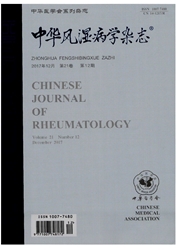

 中文摘要:
中文摘要:
目的研究IFIT1对小鼠巨噬细胞系趋化因子产生的影响,探讨其在系统性红斑狼疮(SLE)中的致病机制。方法电转染法在RAW264.7细胞系中瞬时转染IFIT1,实时荧光定量聚合酶链反应(realtime—PCR)检测IFIT1过表达对该细胞趋化因子巨噬细胞炎症蛋白(MIP)-1α、RANTES、CCL9、CX—CL2和IP-10表达的影响;同时检测NZB/NZWF1小鼠肾组织上述趋化因子表达水平。结果瞬时转染musIFIT1的RAW264.7小鼠巨噬细胞上述趋化因子表达水平均较对照细胞明显增高,LPS刺激后4h及24h表达进一步增高。与正常对照BALB/c小鼠相比,NZB/NZWFI小鼠肾组织中上述趋化因子表达增高。结论狼疮易感基因IFIT1可促进巨噬细胞趋化因子MIP-1α、RANTES、CCL9、CXCL2和IP—10的表达,从而可能参与了SLE局部脏器的免疫损伤。
 英文摘要:
英文摘要:
Objective To explore the effects of systemic lupus erythematosus (SLE) susceptibility gene IFITI on chemokine expression in RAW264.7 macrophages and its possible role in the pathogenesis of SLE. Methods The expression vector of pEGFP-N1/IFIT1 was transfected into RAW264.7 cells by electroporation. 24 h after transfection, cells were stimulated with LPS (1 μg/ml). The transcriptional levels of chemokine MIP-1α, RANTES, CCL9, CXCL2 and IP-10 were measured at various time points after stimulation using real-time quantitative PCR. The chemokine expression levels in the kidneys of 8 week-old NZB/ NZW F1 mice were also determined by real time PCR. Results Compared with ceils transfected with null vector, IFITlhigh RAW264.7 cells produced significantly increased levels of MIP-1α, RANTES, CCL9, CXCL2 and IP-10 both at 4 h and 24 h after stimulation (P〈0.05). Chemokine expression levels were signi- ficantly elevated in kidneys of 8 week-old NZB/NZW F1 mice compared with those of 8 week-old BALB/c mice controls (P〈0.05). Conclusion IFIT1 may participate in target organ damages in SLE via augmentation of chemokine production by macrophage cells.
 同期刊论文项目
同期刊论文项目
 同项目期刊论文
同项目期刊论文
 期刊信息
期刊信息
